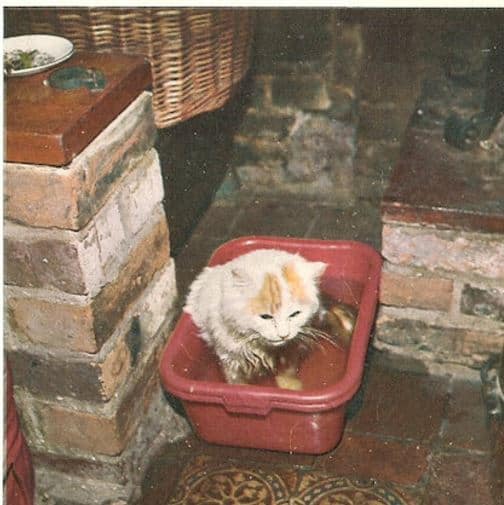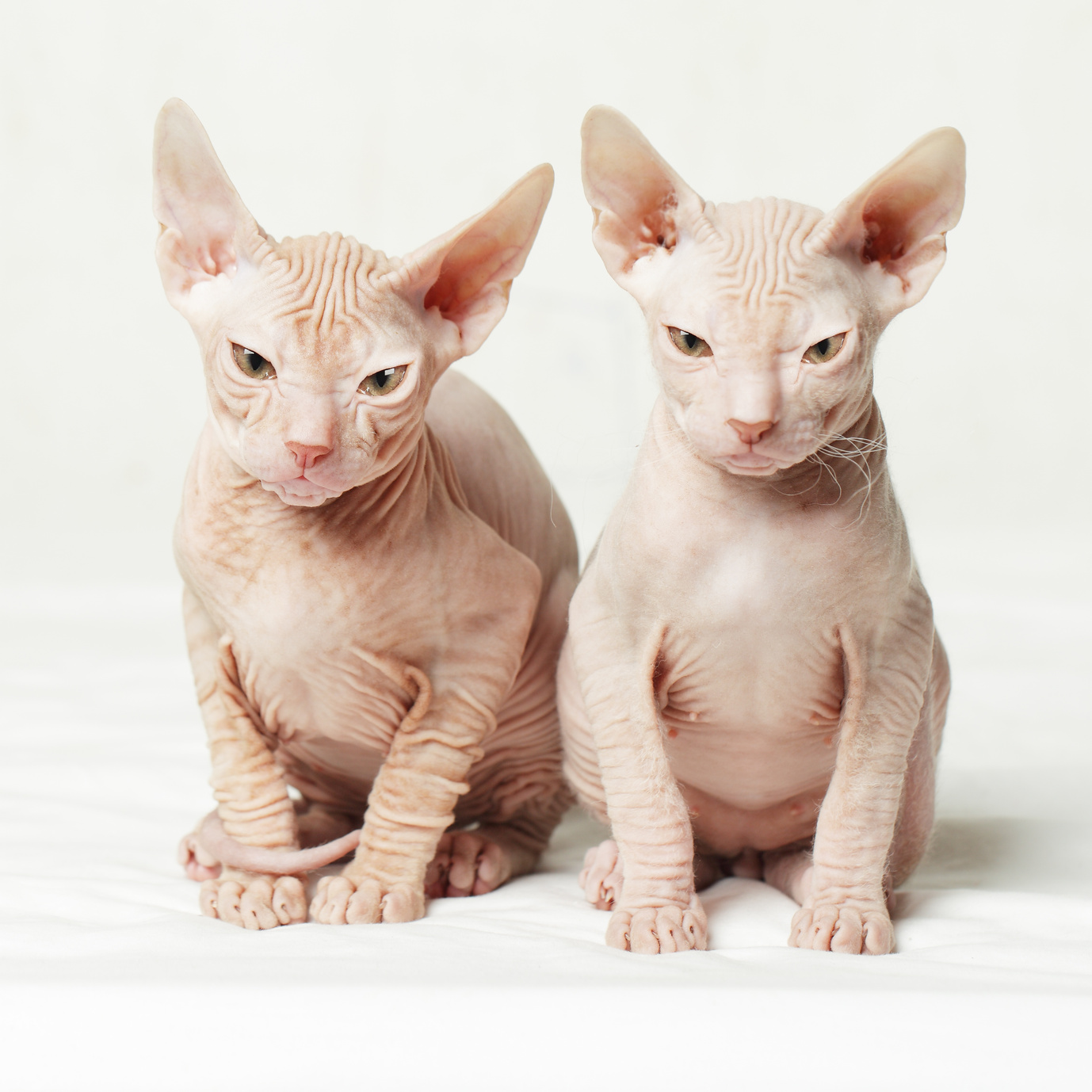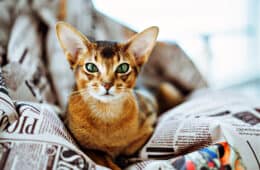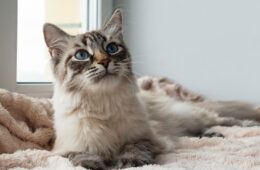The Turkish Van is more than just a beautiful cat with striking markings. It's a breed shrouded in mystique and rarity, boasting a history that reaches back to the far corners of southeast Turkey and beyond.
But what makes this cat so unique? Why does its coat pattern captivate so many?
In this article, we'll discuss Turkish Van cats, exploring their origins, dispelling common myths, and uncovering some astonishing facts. Specifically, we'll share 5 fascinating things you should know about Turkish Van Cats.
Turkish Van Cats: Breed History
Turkish Van Cats hail from a region that spans southeast Turkey and parts of what we now recognize as Iran, Iraq, and Russia. Their history is as intriguing as it is mysterious.
Origins: A Puzzle Wrapped in a Mystery
The origins of the Turkish Van Cats remain uncertain. When did these cats first appear? That's a question without a clear answer. Some reports suggest that Crusaders might have brought them to Europe, hinting that the breed had already been established by then.
Arrival in the UK: A New Chapter
1955 marked a significant year for the Turkish Van Cats. It was then that the breed first arrived in the United Kingdom. The reception was warm, and their unique beauty captured hearts. The UK-based Governing Council of the Cat Fancy (GCCF) recognized the breed officially in 1969.
Turkish Van Cats in the US: A Late Entry
The United States welcomed the Turkish Van Cats much later. They didn't set paw on American soil until 1982. The breed continued to flourish and won recognition from the Cat Fanciers' Association (CFA) in 1994.
SIGN UP FOR THECATSITE'S EMAIL UPDATES >
Turkish Van Cats: Breed Description
Turkish Van Cats are renowned for their unique appearance, boasting a distinctive coat pattern that sets them apart. All Turkish Van cats have a glistening chalk-white body, with color patches limited to the tail and head.
A Dazzling Chalk-White Coat
The Turkish Van Cat's body shines with a glistening chalk-white hue. But what truly makes this coat special are the colored patches. These are limited to the tail and head, adding a splash of color to the pure white canvas.
Additional color markings on the body are allowed, as long as they make up no more than 15 percent of the total area (minus the head and tail).
Symmetry and Balance: The Inverted V Pattern
Ideally, the head patches should form a symmetrical inverted V pattern, divided by white up to at least the ears' front edge. It's a beautiful touch that adds grace to the cat's appearance.
Variety in Colors and Patterns
The head patches and tail can exhibit several colors such as red, cream, black, or blue. Even tabby patterns within these colored areas are permitted, as well as combinations of more than one color. It's a feast for the eyes!
Coat Texture: Soft and Cashmere-Like
The Turkish Van Cat's coat is semi-longhair, but what really stands out is its soft and "cashmere-like" feel. This luxurious texture comes from the absence of a thick undercoat, making the coat a delight to touch.
Tail: A Brush Appearance
The tail, with its "brush appearance," complements the coat, reflecting the cat's elegance and charm.
Body Structure: Sturdy and Graceful
This breed showcases a moderately long and sturdy body. It's vital that the shoulders are as broad as the head, lending a sense of balance to the cat's physique.
Eye Colors: A Window to Mystery
Eye colors in Turkish Van cats can be either amber or blue, or a combination of both (odd-eyed cats). Even more intriguing are the odd-eyed cats, displaying a combination of both colors.
Turkish Van Cats are more than just beautiful. They are an embodiment of grace, mystery, and elegance. From the chalk-white body adorned with colorful patches to the luxurious texture of their coat, they mesmerize all who encounter them.
5 Fascinating Facts about Turkish Van Cats
Turkish Van Cats, with their elegant appearance and remarkable coat patterns, have captured many hearts. But there's more to this breed than meets the eye. Here are five fascinating facts that uncover the mysteries and dispel common myths about these extraordinary cats.
1. The Mystical Piebald Gene: A Genetic Marvel
A special gene, known as the piebald gene, gives the Turkish Van its characteristic white fur with patches of color on the head and tail.
Named after the black and white magpie, this gene is believed to have first appeared in this breed. It's a genetic pattern that can also be found in other animals, like horses and rabbits, making it a fascinating natural phenomenon.
2. The Swimming Cats: Myth or Reality?
Laura Lushington, one of the two women who first imported Turkish Van cats into the UK in 1955, wrote about how much her cats loved swimming.
She described a specific event that she experienced with her newly acquired cats while still in Turkey. Traveling in her car on a hot day, she stopped to cool off in a nearby river, and to her surprise, the cats joined her in the water.
Based on that incident, she provided her cats with water containers where they could sit for a few minutes and enjoy a self-initiated bath.

However, many owners suggest that this isn't the case with their own resident Turkish Vans. While the story is lovely, it's fair to say that not all Turkish Van cats enjoy being in the water.
3. Distinct from the Turkish Angora: A Separate Identity
Don't mistake the Turkish Van for the Turkish Angora just because of the color pattern. Genetic evidence and breed history affirm that these two breeds are entirely distinct from one another.
This common misconception emphasizes the importance of understanding the unique identity of the Turkish Van.
Read more: Turkish Angora Cats
4. Van Pattern: A Legacy Beyond the Turkish Van
The piebald gene that's responsible for the Turkish Van's unique coat pattern can now be found in other cat breeds. "Van" (without the "Turkish" prefix) has become a term used to describe a bicolor pattern where the tail and top of the head are the only places showing color on an otherwise white cat.
Breeds that can have a Van pattern include the Scottish Fold and many others. Non-purebred cats can also have this coat pattern.
5. A Rare Treasure: The Elusive Turkish Van Cats
If you come across a Turkish Van cat at a local cat show, consider yourself lucky. These cats are very rare. The CFA published a list of cat breeds by popularity, based on its registries. Out of the 42 breeds recognized by the CFA, Turkish Van was number 40!
"Is my cat a Turkish Van?"
Turkish Van Cats are a rare and distinctive breed. Finding a purebred Turkish Van in a shelter or casually on the streets is highly unlikely. But what if your cat resembles this unique breed?
Let's talk about what makes a Turkish Van and how to recognize a Turkish Van lookalike.
Beginning: Understanding the Rarity of Turkish Van Cats
Turkish Van Cats hold a special allure with their distinct coat pattern. They rank low in popularity among recognized breeds, making them an uncommon sight.
Is Your Cat a Registered Turkish Van?
If you have a cat that bears a resemblance to the Turkish Van, it's essential to recognize the nature of this breed's rarity. Without registration from an ethical breeder, a cat is not a purebred Turkish Van.
The Enchanting Lookalike: A Common Coat Pattern
The coat pattern, though specific to the Turkish Van, is not rare. A white body, coupled with a colored tail and head patch, is something you might see in other cats.
This resemblance does not make them Turkish Vans, but it adds an exotic touch to their appearance.
Embracing the Lookalike: Unique Yet Familiar
Your cat may not be a genuine Turkish Van, but that doesn't take away its charm. Many cats with a similar coat pattern are looking for loving homes.
Adopting one can provide you with a beautiful companion that carries the mystique of the Turkish Van.
A Closer Look at Turkish Van Cats & Their Fascinating Facts
In our exploration of Turkish Van Cats, we've discussed their captivating beauty, unique coat pattern, and the charming allure that defines them.
From understanding the rare gene that characterizes their appearance to debunking myths about their love for swimming, we've talked about what truly makes these cats a one-of-a-kind breed.
Whether you're a proud owner of a Turkish Van or simply entranced by their exotic grace, their mystique transcends the ordinary and invites us into a world of allure and splendor.
SIGN UP FOR THECATSITE'S EMAIL UPDATES >
Read more: What Breed Is My Cat?
Leave a comment to let us know what you think about Turkish Van cats! Do you own one? Have you seen one? Let us know about your Turkish Van encounters! And if you found this article interesting, please do share it with your friends!
Note: We may get commissions for purchases made through links on this page.




39 comments on “Turkish Van Cats – 5 Fascinating Things You Should Know”